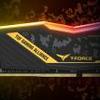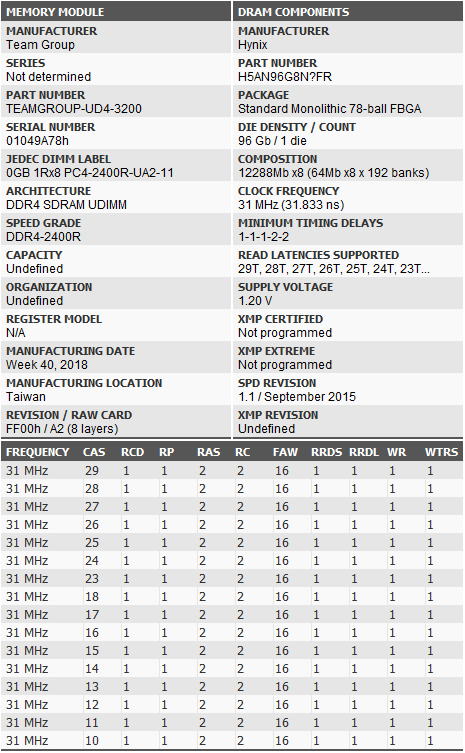Specifications & Features
First up, shall we do some marketing? Given that this kit is a collab between Team and Asus, it is no surprise to see that mentioned very quickly on the product page, just below some brief bullet points (which I will list later). For those interested, here is the blurb:
TEAMGROUP T-FORCE once again joins forces with motherboard leader ASUS and releases the T-FORCE DELTA TUF Gaming RGB overclocking memory which is certified and strictly tested by TUF Gaming Alliance. The appearance is designed with TUF Gaming Alliance’s unique military camouflage pattern. T-FORCE DELTA TUF Gaming RGB overclocking memory is definitely your best and bravest comrade!
There is a lot more, but I have previously linked the product page if anyone wishes to go read the afters, though I would say that calling the design 'Understated' is very much a subjective claim... One segment that, to be fair, did catch my eye was the following:
With strict testing standard, TEAMGROUP insists on using high quality IC chips which offers excellent quality, optimal performance, stability and compatibility. It provides gamers the ultimate sensation of overclocking and an RGB overclocking memory module with high stability.
To those wondering why that jumped out at me, read on. Memory kits may be sold by many different vendors, but the actual DRAM chips used on the inside are exclusively from one of three manufacturers, namely Samsung, Micron, and SK Hynix. DDR4 is now reaching quite ludicrous speeds, but most mortals are still ok with 3200Mhz or so. Remember, anything above the JDEC specification for your platform is technically counted as 'overclocked' memory, even just using the XMP/DOCP profile. Therefore, overclocked memory is only supposed to work, and is not guaranteed. Anyway. Intel platforms tend to be notably less fussy when it comes to memory, and usually accept reasonably overclocked kits from any chip vendor. Ryzen, however, (especially 1st generation), is not so fast and loose. The early days of Summit Ridge were plagued with people unable to get their memory working anywhere near XMP speeds. Now, given the maturity of the 14nm process, and the optimizations made to Pinnacle Ridge, it's less of an issue. However, there is always the question mark hovering over any memory buyer with a Ryzen system as to whether their kit is going to work!
As Krzysztof did in his recent look over of some APacer memory, the first tool we will use to get a memory deep dive is Thaiphoon Burner, a great (albeit interestingly named, I will admit) tool for checking both basic and slightly more in-depth data about installed memory. See the screenshot below.
Well well well... immediately you'll notice the obvious. Despite the claims of 'high-quality IC chips', the kit in front me would appear to use Hynix memory modules. These were, in the early days of Ryzen, notorious for failing to run to their XMP specification. However, fast forward quite a few months (and, by March next year, 2 years), and much has improved in this space. There are other disparities as well (most notably in the form of missing info). I would suspect this is due to the software being unable to read certain aspects of the memory's specifications. Either way, I'm not especially concerned about the memory being Hynix. I have little doubt that the default XMP profile will work, but the question is whether we'll manage to get anything more out of it with manual tweaking.
Actually finding pricing on this number was... impossible. There is a non-RGB version of the same memory, with exactly the same set of timings (therefore, in my mind, the same chips), for $159.99 from Newegg.com. In the UK, the same kit is available for £149.59, and in the EU (Germany at least), the price is... nada. Couldn't find that kit, either. Perhaps this is a 'new' problem, given that the kit hasn't been long to market. However, the fact is that I couldn't find my review sample for sale anywhere in the US, UK, or EU. Not a major problem, however, as I'm sure that'll be a non-issue soon. Realistically, add about 15-25 GBP/USD for the RGB, and you get to about 175-180 USD/GBP for the kit we have on hand. For that money, I would hope to see Samsung memory modules, but I guess the proof will be in the overclocking pudding? We also cannot overstate the potential for 'RGB Tax' to be a factor, here.
Let's get the photography and eye-candy out of the way first, and then we can move onto what matters. The performance.


